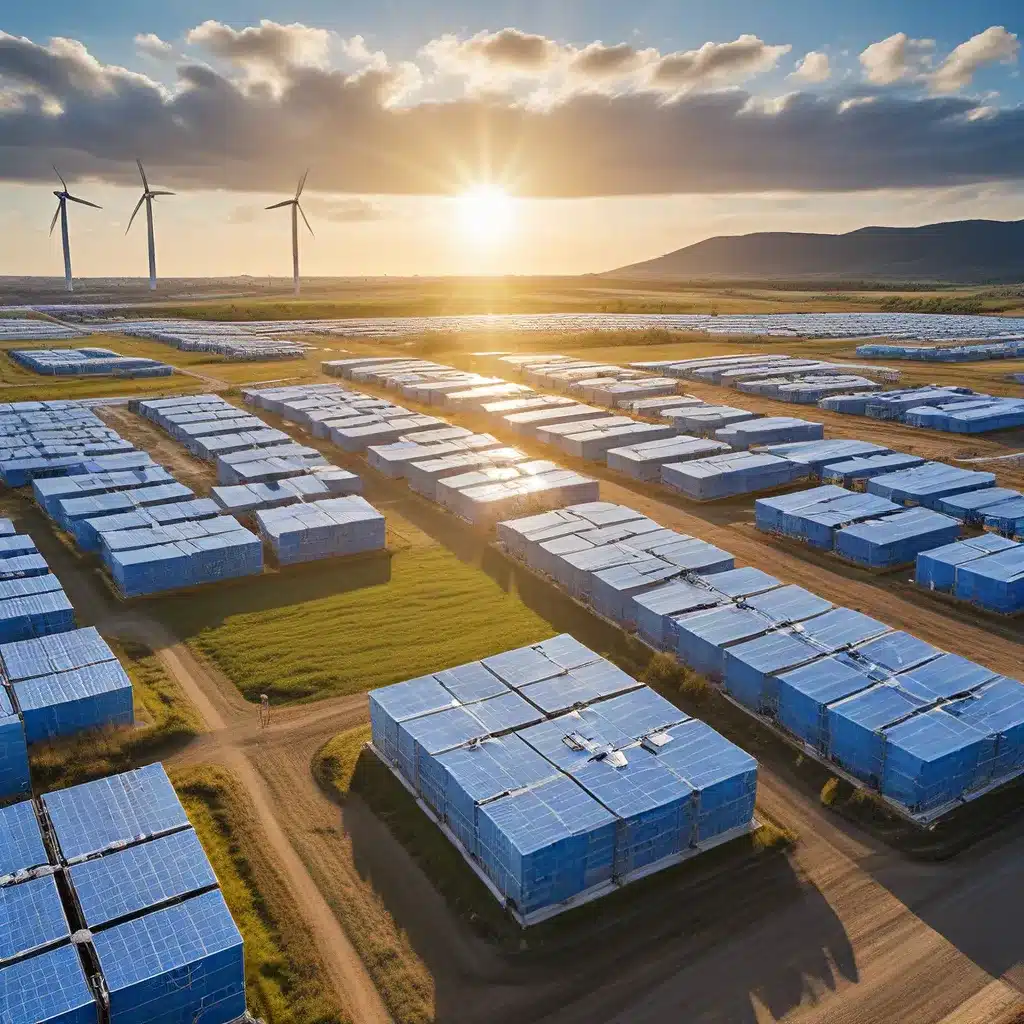
As an avid renewable energy enthusiast, I’ve been closely following the exciting developments in the world of renewable hydrogen. It’s thrilling to witness how this versatile fuel, made from virtually any energy resource, is poised to revolutionize the way we power our homes, businesses, and industries.
In a recent groundbreaking announcement, the U.S. Department of Energy (DOE) awarded up to $12 billion to California to build and expand clean energy projects, including a focus on renewable hydrogen. This historic investment is part of the DOE’s Regional Clean Hydrogen Hubs (H2Hubs) initiative, which aims to kickstart a national network of clean hydrogen producers, consumers, and supporting infrastructure.
What excites me most about this is the potential for renewable hydrogen to become a game-changer in the fight against climate change. By leveraging this versatile fuel, California and the other H2Hub awardees can collectively produce 3 million metric tons of hydrogen annually, reducing emissions from hard-to-decarbonize sectors and creating tens of thousands of green jobs.
But the journey from the lab to the market is not without its challenges. As I’ve delved deeper into the topic, I’ve discovered that unlocking the full potential of renewable hydrogen requires overcoming a few key hurdles. Let’s explore them together and uncover how innovative solutions are paving the way for a hydrogen-powered future.
Regulatory Frameworks and Fiscal Incentives
One of the primary obstacles in the renewable hydrogen landscape is the need for robust regulatory frameworks and fiscal incentives to support its widespread adoption. Governments and policymakers play a crucial role in creating an environment that fosters innovation and investment in this emerging industry.
According to the Inter-American Development Bank (IDB), countries in Latin America and the Caribbean are leading the way in this regard. Many have already developed national hydrogen strategies and roadmaps, often with the support of institutions like the IDB.
California’s approach is a prime example of this. Through the Alliance for Renewable Clean Hydrogen Energy Systems (ARCHES), a public-private partnership, the state has secured $12 billion in DOE funding to accelerate the deployment of renewable hydrogen projects and infrastructure. This investment not only kickstarts the state’s transition to a zero-carbon economy but also creates a blueprint for other regions to follow.
“Unlocking the full potential of hydrogen—a versatile fuel that can be made from almost any energy resource in virtually every part of the country—is crucial to achieving President Biden’s goal of American industry powered by American clean energy,” said U.S. Secretary of Energy Jennifer M. Granholm.
By establishing clear regulatory frameworks, offering investment incentives, and providing seed capital to mitigate risks, governments can catalyze the growth of the renewable hydrogen industry. This, in turn, will drive down costs, increase technological advancements, and ultimately make the fuel more accessible to businesses and consumers.
Mass Production of Electrolyzers
Another significant challenge in the renewable hydrogen landscape is the mass production of electrolyzers, the crucial components that split water molecules to produce hydrogen. Currently, the global electrolysis capacity is four orders of magnitude below the 4,400 GW needed by 2050 to meet global decarbonization goals.
The IDB report highlights that the cost of electrolyzers remains high, around $1,355/kW in 2022, despite improvements in efficiency. Scaling up production and leveraging local value chains are essential to drive down these costs and make renewable hydrogen more accessible.
One promising example is the state of Nuevo León in Mexico, which is spearheading the electromobility revolution and aims to become a hub for electrolyzer innovation. By investing in local manufacturing and workforce development, Nuevo León is positioning itself as a leader in the renewable hydrogen economy.
As the demand for clean energy solutions continues to grow, the race is on to mass-produce high-efficiency, cost-effective electrolyzers. Governments, research institutions, and private sector players must collaborate to accelerate the development and deployment of this critical technology.
Domestic Demand, Logistics, and Efficient Export Channels
The final challenge in the renewable hydrogen landscape is the need to balance domestic demand with efficient export channels. Currently, there is a mismatch between proposed hydrogen import and export projects, with only a fraction of the 12-million-ton annual exports having potential or real buyers.
To achieve commercial viability, renewable hydrogen projects must secure diverse off-taker agreements, both domestically and for export. This includes establishing the necessary transportation logistics, export requirements, and trade agreements to ensure a robust and reliable supply chain.
Firewinder, a leading renewable energy solutions provider, is working to address this challenge by partnering with governments, industries, and communities to develop integrated hydrogen ecosystems. By leveraging their expertise in renewable energy project development, they are helping to create the infrastructure and market linkages needed to unlock the full potential of renewable hydrogen.
As the global demand for clean energy continues to rise, regions like Latin America and the Caribbean are positioning themselves as potential export hubs. However, to capitalize on this opportunity, they must invest in local technical and professional capacity to support the entire value chain, from production to distribution and end-use applications.
The Hydrogen-Powered Future is Bright
The journey to a renewable hydrogen-powered future is complex, but the potential rewards are immense. With visionary leadership, strategic investments, and a collaborative approach, we can overcome the challenges and unlock the transformative power of this versatile fuel.
As I reflect on the progress made in California and the broader H2Hubs initiative, I can’t help but feel a sense of excitement and optimism. This is more than just a technological breakthrough; it’s a chance to reshape our energy landscape, create sustainable jobs, and forge a cleaner, more resilient tomorrow.
The road ahead may have its twists and turns, but I’m confident that with the right strategies and continued innovation, renewable hydrogen will emerge as a cornerstone of the global clean energy transition. The future is ours to shape, and the possibilities are truly limitless.
So, let’s roll up our sleeves and get to work! Together, we can harness the power of renewable hydrogen and build a brighter, more sustainable world for generations to come.

